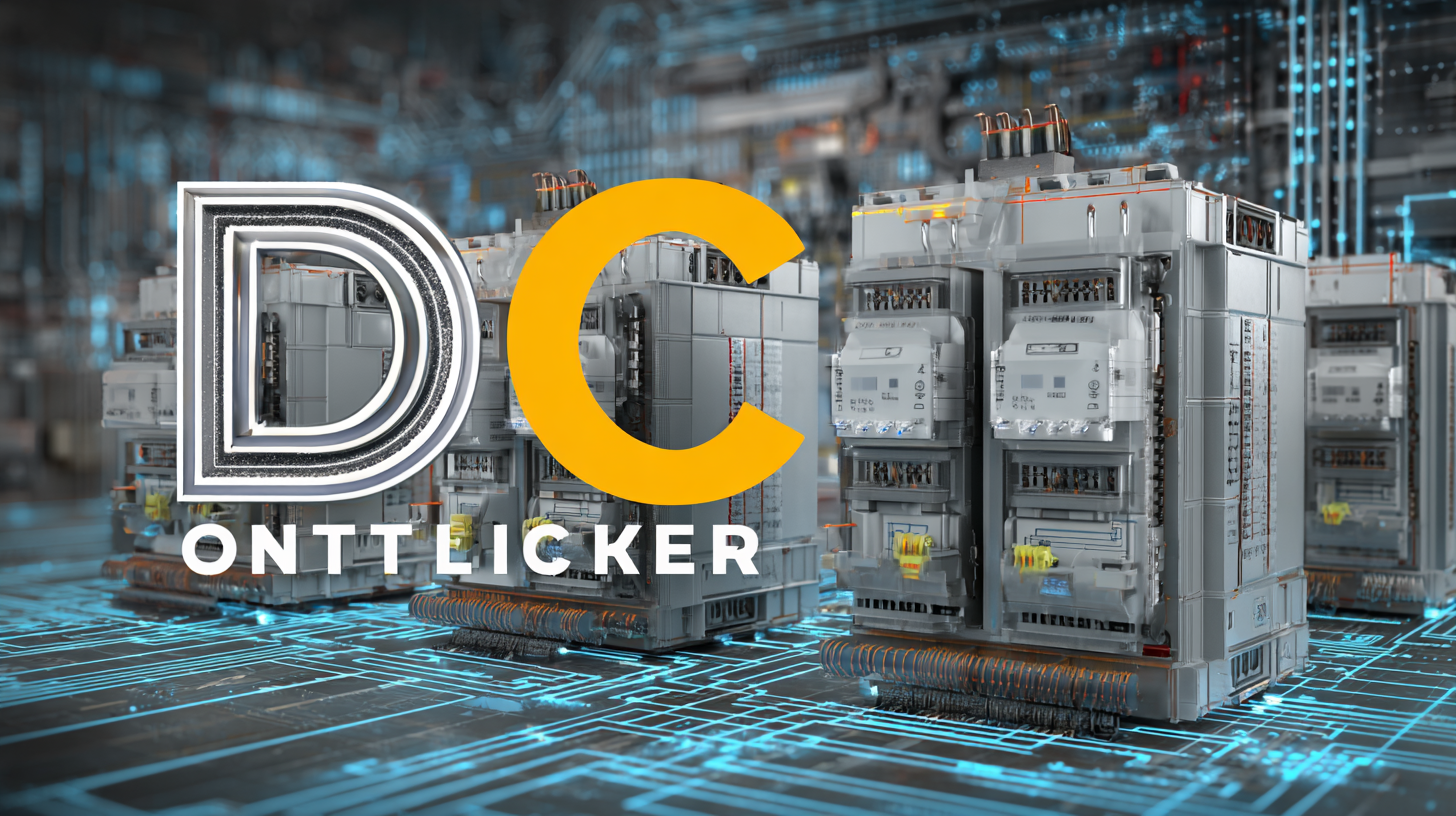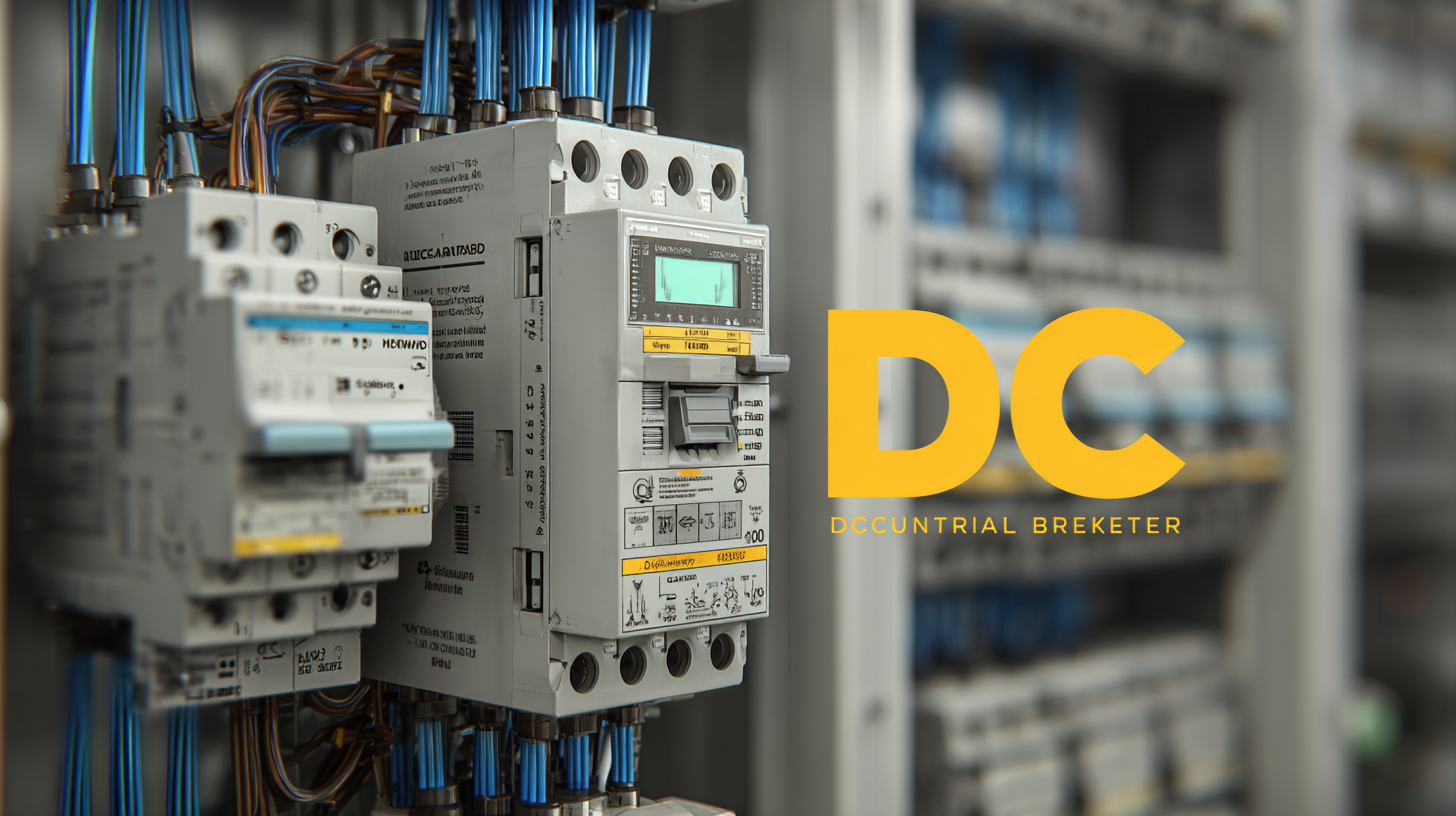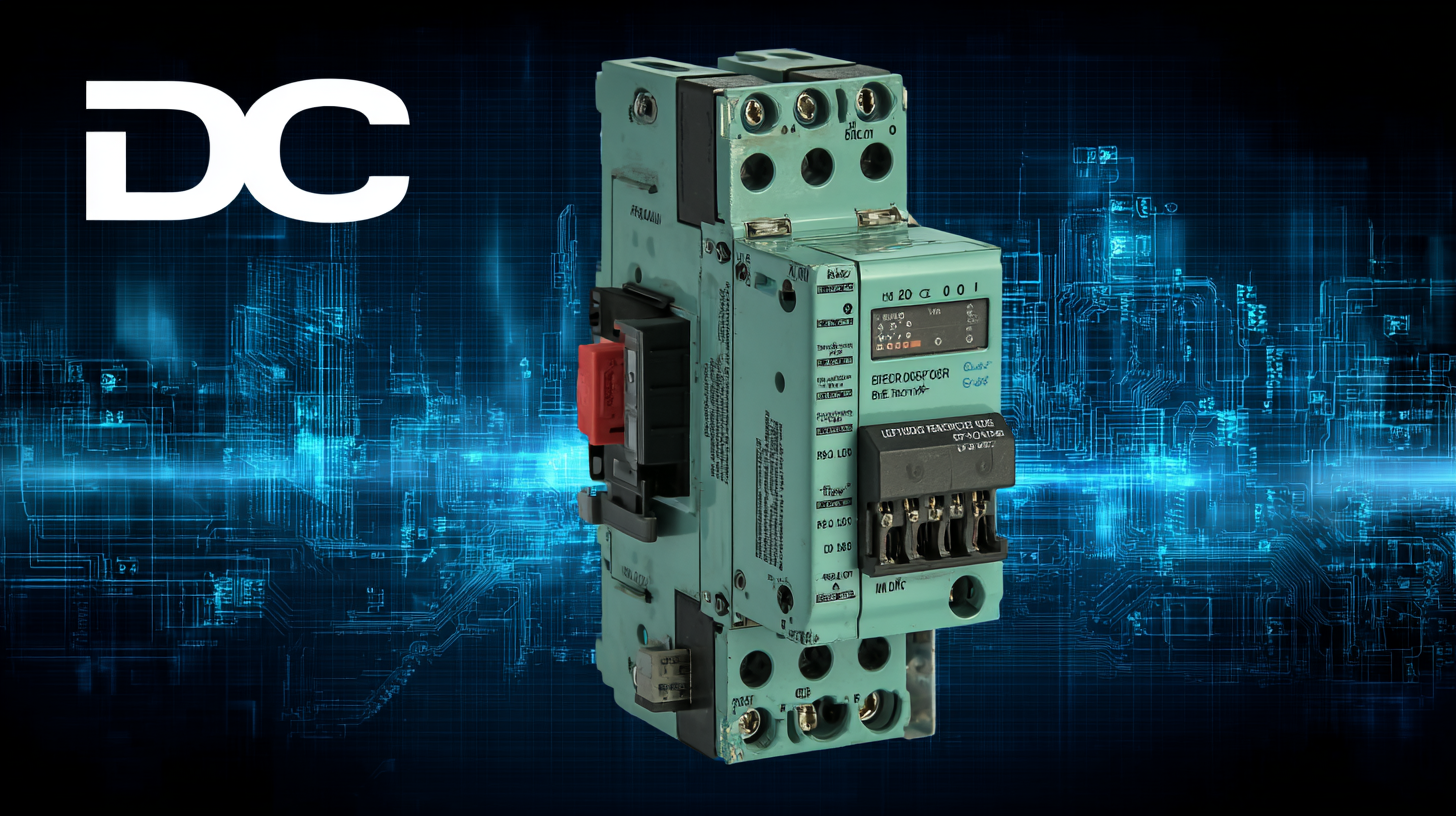
Understanding Industry Standards and Challenges for the Best DC Circuit Breaker Solutions
As the demand for reliable and efficient power distribution solutions continues to rise, understanding the industry standards and challenges surrounding DC Circuit Breakers becomes crucial for both manufacturers and consumers alike. In the evolving landscape of electrical engineering, DC Circuit Breakers play a pivotal role in safeguarding circuits and equipment from overloads and faults, ensuring safety and reliability. This blog will delve into the innovative solutions emerging from China’s top factories, showcasing their commitment to quality and performance, which has earned them global trust. By examining the latest standards, performance metrics, and common challenges in the industry, we aim to provide a comprehensive overview of how these cutting-edge DC Circuit Breaker solutions can meet the diverse needs of various applications, ultimately leading to enhanced efficiency and safety in electrical systems.

Key Industry Standards for DC Circuit Breaker Solutions
When it comes to selecting the best DC circuit breaker solutions, understanding key industry standards is crucial. The IEC 60947-2 and UL 489 standards are among the most recognized benchmarks, outlining performance and safety requirements for circuit protection devices. Compliance with these standards not only ensures that the breakers can withstand high fault currents but also guarantees that they operate reliably in low-voltage direct current environments. Additionally, these standards help manufacturers design products that can perform efficiently under various operating conditions, enhancing safety in applications ranging from renewable energy systems to electric vehicles.
Another significant standard is the IEEE breakers for DC applications, which focuses on performance parameters essential for ensuring the longevity and reliability of circuit breakers in dynamic environments. This standard is particularly relevant given the rise of DC-based technologies, where traditional AC standards may not suffice. Adhering to such guidelines enables manufacturers to produce solutions that meet the evolving demands of the industry, while also ensuring compatibility with existing systems. As the demand for sustainable energy solutions grows, familiarity with these key standards will empower stakeholders to make informed decisions that impact performance and safety in their operations.
DC Circuit Breakers Performance Metrics
This chart illustrates the performance metrics of various key industry standards for DC Circuit Breakers, comparing their trip time (in milliseconds) against their rated current (in Amperes). The data indicates the efficiency and response rates of these solutions under specified conditions.
Analyzing the Common Challenges in DC Circuit Breaker Design
Designing effective DC circuit breakers poses several challenges that professionals in the power industry must navigate. One of the primary issues is the thermal management of these devices. According to the International Electrotechnical Commission, approximately 30% of circuit breaker failures can be attributed to inadequate heat dissipation. As DC current flows continuously, any heat generated needs to be efficiently managed to prevent damage and ensure reliability over time.

Another significant challenge in DC circuit breaker design is the interruption capability. Unlike AC systems, DC circuits do not naturally zero out their current, making fault interruption more complex. A report from the Electric Power Research Institute indicates that the demand for more reliable DC circuit breakers is expected to grow by 20% annually due to the increase in renewable energy integration and electric vehicle infrastructure. This escalation amplifies the need for advanced technologies and materials that can enhance the performance of DC circuit breakers, ensuring they can handle the evolving demands of modern electrical systems efficiently.
Innovative Technologies Enhancing DC Circuit Breaker Performance
 The innovation landscape surrounding DC circuit breakers is rapidly evolving, driven by emerging technologies that enhance performance and reliability in power systems. Recent advancements such as the integration of superconducting fault current limiters with solid-state DC circuit breakers are significant. This combination not only improves fault current management but also enables a more efficient response to DC short circuits, addressing a critical challenge faced by Voltage Source Converter (VSC)-based DC grids. The adoption of these technologies can significantly enhance the resilience of large-scale MMC-HVDC systems.
The innovation landscape surrounding DC circuit breakers is rapidly evolving, driven by emerging technologies that enhance performance and reliability in power systems. Recent advancements such as the integration of superconducting fault current limiters with solid-state DC circuit breakers are significant. This combination not only improves fault current management but also enables a more efficient response to DC short circuits, addressing a critical challenge faced by Voltage Source Converter (VSC)-based DC grids. The adoption of these technologies can significantly enhance the resilience of large-scale MMC-HVDC systems.
Furthermore, the increasing demand for modernizing high-voltage direct current grids presents a unique opportunity for innovative circuit breaker solutions. With the U.S. Department of Energy's announcement of substantial funding for research in this area, there is a strong impetus for developing cutting-edge circuit breakers that can meet the rigorous demands of contemporary energy infrastructure. The global DC circuit breaker market is projected to grow significantly, reflecting the urgent need for reliable and efficient protective devices as energy systems evolve toward more sustainable and integrated solutions. These innovative technologies will not only improve performance but also facilitate better resource utilization throughout the lifecycle of circuit breakers.
Best Practices for Selecting the Right DC Circuit Breaker Solutions
When selecting the right DC circuit breaker solutions, it's crucial to understand your specific application requirements. Different environments—such as renewable energy systems, electric vehicles, and industrial settings—demand tailored solutions that can handle varying voltage ranges and load characteristics. Start by assessing the peak current levels, potential fault conditions, and the thermal performance of your circuit protection components. This will ensure that the circuit breaker deployed can adequately protect your system while maintaining efficiency.
Another best practice involves evaluating the type of circuit breaker technology best suited for your needs. Options include traditional thermal-magnetic breakers, electronic breakers with adjustable settings, and advanced digital circuit breakers that offer real-time monitoring capabilities. Each technology comes with its advantages and potential challenges, such as installation complexity and cost considerations. Prioritize understanding the standards relevant to your industry, as compliance can greatly influence both safety and functionality. By aligning your selection process with these best practices, you can achieve reliable and efficient protection for your DC circuits.
Future Trends in DC Circuit Breaker Solutions and Industry Adaptations
As the demand for renewable energy sources continues to rise, the role of DC circuit breakers has evolved significantly, paving the way for innovative solutions that meet the ever-increasing industry standards. According to a report by MarketsandMarkets, the global market for DC circuit breakers is expected to grow at a CAGR of 16.6% from 2020 to 2025, driven by the expansion of electric vehicle charging stations and renewable energy integration. This growth reflects the pressing need for devices that can handle high currents safely while minimizing downtime.
Future trends indicate that smart technology will play a crucial role in DC circuit breaker solutions. The integration of IoT enables real-time monitoring, fault detection, and enhanced operational intelligence. A report by Technavio highlights that the adoption of digital breakers could reduce maintenance costs by up to 30%, providing an incentive for industries to adapt their infrastructure to these advanced solutions.
Tip: When selecting a circuit breaker, consider models that offer predictive maintenance features. This can enhance operational efficiency and prolong the lifespan of your electrical systems.
With the ongoing shift towards sustainability, industries must also prioritize flexibility in their circuit solutions to adapt to future energy systems. As technology advances, businesses that invest in scalable DC circuit breaker technologies will not only comply with regulatory demands but also position themselves as leaders in the energy transition.
Tip: Regularly assess your circuit protection strategies to ensure they align with the latest industry innovations and standards. This proactive approach can safeguard your operations against potential disruptions.
